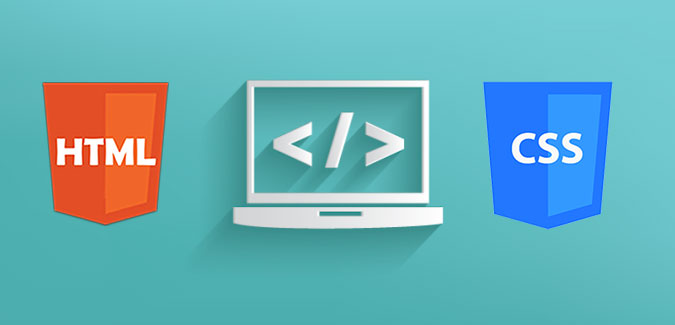In today’s world of information, we’ve come to accept the advent of the World Wide Web for better or for worse. Along with it, we’ve grown familiar with the millions and billions of websites and pages that give us desired content.
But have you ever stopped think about who makes all these sites and pages and how they do their jobs?
As it turns out, the job of web designer is a very important one because if it’s not done well, the website would be — well, unusable. Text couldn’t be read, buttons couldn’t be found, it wouldn’t be obvious how to navigate between pages; in short, everything that you know about the website in its present form would simply perform poorly if it performed at all.
When we create information, it’s not the same thing as designing a web page, just as writing a story isn’t the same as laying out an article in a magazine or creating a page in a newspaper.
What is Web Design?
Web design is a clearly-defined set of skills that pertain to displaying information in a web browser so it:
Makes sense – Is intuitive to use – Is legible – Is aesthetically pleasing – Is presented in a way that consistently matches the other pages of a site and/or other sites

Most of these skills have to do with knowing how the computer displays information and handles photos, typefaces, leading and kerning of characters and formatting of headlines, quotations and captions. It involves translating what a content creator wants to say into a presentable format that’s flexible enough to work on many different computers, operating systems, screen sizes and devices.
A number of generic design skills such as page layout and placement of elements can be carried over from the analog world into the digital one. However, the methods of positioning elements and adjustments of window sizes, browser settings and plug-ins have no equivalent in the offline realm and are unique to this job.
Job Description
The person in the role of website designers must know very specific rules about how HTML, or hypertext markup language — the language all web pages are created from — is displayed.
They must know how to translate design elements into HTML and CSS, or cascading style sheets, and about how different devices and operating systems handle type, browser extensions and multiple file formats.
A competent website designer also needs to take into account the variable of time as it relates to loading of pages and readability of content — that is, how users can be efficient with their time in working with the information being displayed.
This latter function is increasingly becoming the province of a person in another role, that of the user interface (UI) designer, but this will be discussed more in depth below.
Web designer must liaise with a number of other members of a development team in order to successfully carry out their mission.

Firstly and foremostly, they must work with web developers. Whereas web designers are responsible for the aesthetics and appearance of a website, website developers are responsible for the “back-end”, — the technical parts of a site that take place “behind the scenes” that enable it to function.
These might include shopping carts, ordering systems, email lists and forms processing.
This collaboration is necessary to:
- Ensure that the designer’s directives are possible within the site’s architecture.
- Ensure that the designer’s directives are desirable within the site’s architecture.
- Help the designer understand the constraints and limitations of all the elements they place on pages, including plug-ins, videos, photos, forms and links.
A designer must also work with content creators to understand the limits of different pieces of site content, such as article lengths and headline lengths, to determine the priority of different content components and so on.
Content creators also will spell out to the designer how much content there will be overall, so they can decide how much information to display on each page and how many pages the site will consist of.
Content creators can be videographers, photographers or musicians; they’re not just limited to the written word. It’s the job of a website designer to seamlessly integrate many forms of media onto a page or within a site so the user can experience something integrated and whole.
Depending on the organization, designers may also be expected to work with marketing communications and branding staff, creative directors, human factors specialists and third parties or outside consultants.
How to Become a Web Designer
To enter into this position, most people should first learn as much as possible about the generic discipline of design.
While it’s true that you can be a website designer without knowing any of these skills, you probably won’t be a very good one. Some basic design and layout courses and/or knowledge are definitely in order to develop your aesthetic sensibility and understand what people respond to and what they don’t. It’s important to know these things in a generic sense before your skills can be applied to the website.
Many designers come from a background in print design or art direction before they attempt to make a transition to the webpage.
Once you have a competency with general design and layout, what remains is to translate these skills to the world of the web.

Unfortunately, laying things out on a web page using HTML is quite different than mocking them up in a page layout program for print or cutting and pasting content with scraps of paper.
It’s critical to learn the vocabulary of HTML and CSS thoroughly, so you can express your ideas with these languages and understand the implications of using them. These skills can be learned in a classroom, but more often than not, they’re best learned in the real world by creating one’s own webpages and sites from scratch using web design software or even hand coding.
Once individual pages are built, the designer should link them together as a site to get an idea of how sets of pages are perceived holistically as sequences and in hierarchies.
Job Requirements
While there are still many people who carry the title of web designer, this job is becoming fractured into several more specific jobs, particularly in larger organizations.
There are now two clearly defined roles that have to do with user interfaces, which are only those parts of pages that users interact with, as opposed to content elements of pages which contain information that a user absorbs.
The first role is the aforementioned UI designer, who considers what elements the user will employ to navigate the site and interact with its content.
The second role is that of a user experience (UX) designer, who considers how the user will react to the design of a site and whose job is to make such interaction and navigation as efficient and pleasant as possible.
Other roles that are breaking out from the greater role of website designer are those of the visual designer, the user testing manager and/or the human factors specialist.

The first of these new roles is the one that most closely resembles the older title of web designer. A visual designer focuses purely on aesthetics without thinking about the “how” part of their task — the methods by which their designs will be implemented or what technical implications there may be in carrying them out.
A visual designer’s job is purely about the look of a website; many visual designers do not need to have full knowledge of HTML and/or CSS.
A user testing manager tests the website with focus groups of experienced or average users, depending on a company’s goals, often even before a design is put into production.
A human factors specialist is someone who focuses on human behavior and psychology, who can advise companies about user interface strategy and real-world expectations for site performance and usage.
As you can see, the interface aspects of web designer’s job are rapidly overshadowing the aesthetic aspects, and this is carrying over into the salary arena as well.
For now, in larger organizations, all of these jobs may be separate roles entirely whereas in smaller organizations, website designers could be expected to perform most or all of them.
Salary and Job Outlook
The salary for website designers can vary greatly depending on how many pages he or she is expected to design in any given timeframe, the prominence of the sites they’ll work on and the overall size of the organization they’ll be working for.
A reasonable salary range would be from $39,117 to in excess of $130,446 a year if the job has not been split out into multiple roles as discussed above.
In cases where the job of a designer is essentially interchangeable with that of a visual designer, salary ranges can be slightly less, from $33,546 to $95,952 a year, depending on the employer’s size and how many branding guidelines, design standards and other constraints the designer must conform to with their work.
The job outlook for web designers is excellent. Even though the “gold rush” of the early web years has passed, new positions are being created constantly.
Worldwide growth of Internet and web marketing means this job will be very in-demand in the future. However, it will benefit people entering this field to specialize in one of the aforementioned breakout roles above to really capitalize on new opportunities.
Advantages and Disadvantages

Advantages
The job of website designer carries with it a lot of power and responsibility. People in this position can determine very directly and unilaterally how a company is perceived in marketplaces and in electronic form.
For customers or clients who will never physically interact with a company, this has tremendous impact. However, there’s usually a limit to how much creativity one can apply in this role and how much room one has to work with within company branding guidelines, design standards, etc.
As with any corporate design-related job, the creative part is determined within boundaries that almost all of the time the designer will not define themselves.
While it’s true that in rare cases, designers have been able to motivate companies to change their constraints or move in new design directions, more often than not, the reality will be the other way around.
Disadvantages
Some other downsides to the job are that not all of what a designer can visualize may be possible technically. While it’s true that web browser capabilities have expanded greatly from the early days of the web, there are still constraints and limitations that can create extreme challenges for designers that may not exist in other media.
Also, due to the rapidly-changing nature of the website, most designers’ creations are almost never permanent. Many sites get redesigned every few years, so a someone in this role should resign themselves to the fact that their work may be “erased” from the Internet within a few months to a few years after it’s put online, limiting potential audiences.
In rare cases, finished designs may not ever be published, particularly if users don’t respond well to them in pre-release periods.
Career Advice and Tips
The best tips for those people seeking to be web designers are to:
- Learn about design and layout in a generic, offline form, such as print.
- Learn HTML and CSS.
- Try designing web pages by hand or using web page design software.
- Look at the pages of particularly attractive sites and try to decode how they were built.
This knowledge is not hard to learn, and it can be rewarding even if one does not eventually take the job as a web designer. It’s also worth talking to or emailing a senior designer to see how they enjoy their job and seeing what tips they can offer.
There are many books and sites about web design, with examples of techniques and recommendations.
One of the best features of a website is that the code for any webpage or site can be viewed in most browsers at any moment. In most cases, the code is easily read and deciphered, even for people who don’t fully know HTML or CSS. Reverse-engineering pages and sites can be an excellent way to learn the skills for this job.
